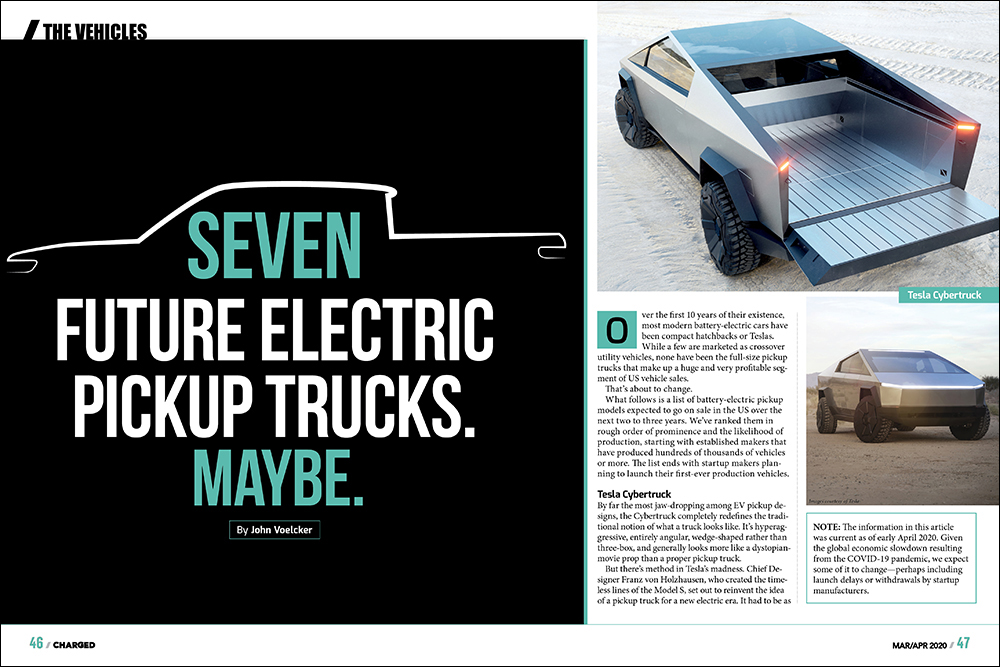Over the first 10 years of their existence, most modern battery-electric cars have been compact hatchbacks or Teslas. While a few are marketed as crossover utility vehicles, none have been the full-size pickup trucks that make up a huge and very profitable segment of US vehicle sales.
That’s about to change.
What follows is a list of battery-electric pickup models expected to go on sale in the US over the next two to three years. We’ve ranked them in rough order of prominence and the likelihood of production, starting with established makers that have produced hundreds of thousands of vehicles or more. The list ends with startup makers planning to launch their first-ever production vehicles.
NOTE: The information in this article was current as of April 2020. Given the global economic slowdown resulting from the COVID-19 pandemic, we expect some of it to change—perhaps including launch delays or withdrawals by startup manufacturers.
Tesla Cybertruck
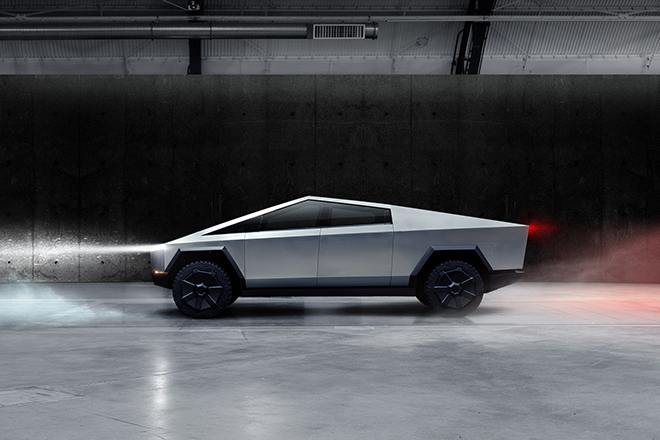

By far the most jaw-dropping among EV pickup designs, the Cybertruck completely redefines the traditional notion of what a truck looks like. It’s hyperaggressive, entirely angular, wedge-shaped rather than three-box, and generally looks more like a dystopian-movie prop than a proper pickup truck.
But there’s method in Tesla’s madness. Chief Designer Franz von Holzhausen, who created the timeless lines of the Model S, set out to reinvent the idea of a pickup truck for a new electric era. It had to be as aerodynamic as possible, and sturdier than the toughest, existing “Built Ford Tough” or “Like a Rock” pickups, and it needed to garner enough attention to market itself. If the company’s claims are to be believed, it accomplishes all that.
Tesla says its top-end Cybertruck, which was unveiled in November 2019, will have a range of 500 miles, use 3 motors and active suspension, and deliver 0-to-60-mph acceleration in less than 3 seconds. Tesla cites a payload of 3,500 pounds and towing capability up to 14,000 pounds. The company says it has taken 250,000 reservations for the truck.


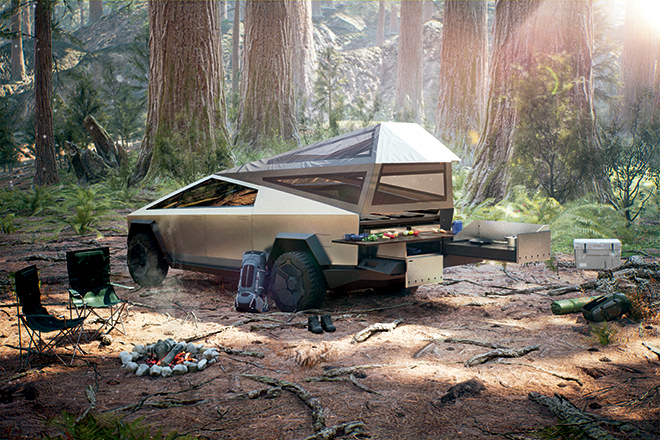

Unusually, the truck is a unibody design, using unpainted, ultra-hard 30x cold-rolled flat-plate stainless steel—the same stuff CEO Elon Musk’s other company, SpaceX, uses for its Starship rocket. Tesla will spend just $30 million on tooling, Musk says. Manufacturing experts suggest that at a volume of 50,000 trucks a year, the design will save the company $60 million on stamping presses, and $150 million or more on painting expenses.
Tesla says Cybertruck prices will start at $39,900, and it expects to start shipping the first production models in late 2021. Thus far, no manufacturing site has been chosen, though Musk has hinted the company would look in the Midwest for a plant site.
GMC Hummer EV SUT


General Motors’ next wave of EVs, which was shown to automotive reporters in March (after their phone cameras were disabled), consists of medium- to full-size SUV and pickup truck models. These vehicles are to start rolling off the lines in an entirely rebuilt Detroit-Hamtramck assembly plant late in 2021. The first of the new EVs is a pickup truck that will carry the revived Hummer name.
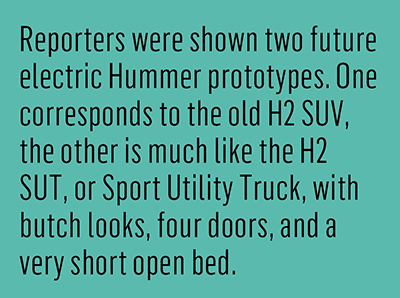

This time, Hummer is not its own brand, but a model line within the profitable GMC luxury truck brand. Reporters were shown two future electric Hummer prototypes. One corresponds to the old H2 SUV, the other is much like the H2 SUT, or Sport Utility Truck, with butch looks, four doors, and a very short open bed.
Only minimal specifications were given. GM President Mark Reuss said battery pack capacities for GM’s new global electric-car skateboard architecture would range from 50 to 200 kWh. An ad for the Hummer EV that was aired during the 2020 Super Bowl touted 0-60 acceleration of about 3 seconds, and total output of 1,000 hp (750 kW). For the rest, we’ll have to wait for the formal introduction, which is scheduled for Detroit this May.
This one seems pretty likely to make its way to dealerships. GM is starting to discuss its future EV plans more openly, and while much of that has to do with boosting its stock price—and there are reasons to be openly skeptical—the company has committed $5 billion to electrification efforts. That will pay for retooling Hamtramck to produce only EVs, as well as GM’s share of a joint venture with cell-maker LG Chem to build an entire cell factory in Ohio to supply it.
The GMC Hummer EV SUT should be available at GMC dealers before the end of 2021. Pricing hasn’t been released, but it’s safe to assume it will be high. Reuss said confidently that every EV coming off the lines in Hamtramck would be profitable for GM. If you’re fitting a battery over 100 kWh, that means a high price—and, consequently, low volumes.
Ford F-150 Electric
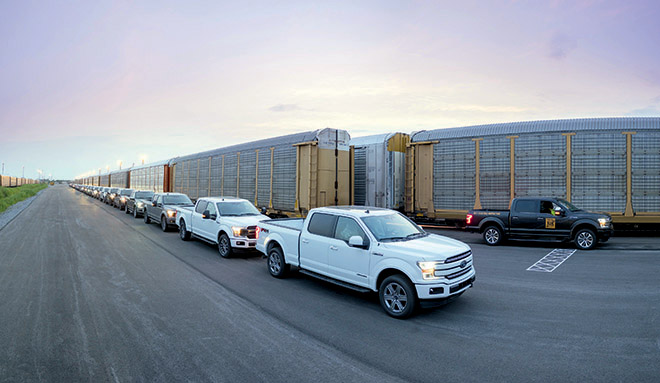

The blue-oval company has lagged in battery-electric vehicles for a decade. Under new CEO Jim Hackett, that is changing fast. The company has multiple EV projects underway, including its well-received 2021 Mustang Mach-E, a future Lincoln built on larger Rivian underpinnings, and one or more models for Europe based on Volkswagen’s high-volume MEB battery-electric platform.
Ford is also developing an all-electric version of its highest-volume and most profitable vehicle, the F-150 full-size pickup. This lets the company “future-proof” its most important model, in the words of Jim Farley, who was then President of Global Markets and has since been promoted to COO, making him Hackett’s heir apparent.
In July 2019, Ford released a video that showed a prototype all-electric F-150 towing 10 double-decker train cars, which together weighed roughly a million pounds. Just for good measure, 42 new F-150s were loaded into the train cars, and the electric truck towed the resulting 1.25-million-pound train just as easily. Students of physics will realize this isn’t all that hard, but the video garnered attention for the prodigious torque produced by electric motors.


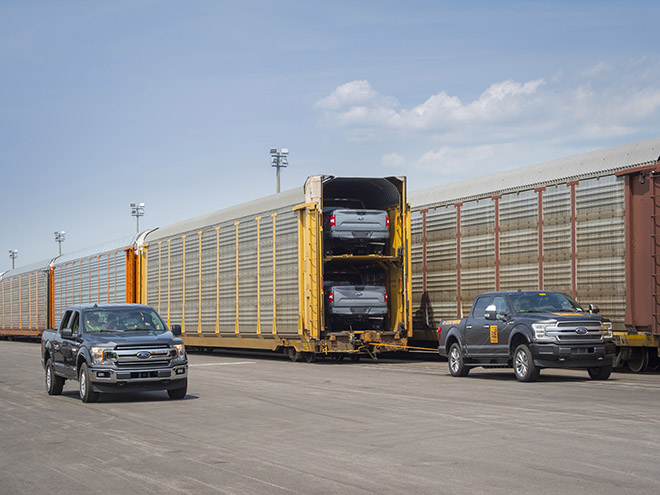

Specs for the future electric F-150 have not been offered, and will likely remain MIA until after the Mach-E starts deliveries this fall. The vehicle in the video had visible battery packs hanging well below the doorsills. We’d expect the final product to be much better integrated—and to provide the usual ground clearance of a conventional F-150. Deliveries may start in 2021 or 2022; prices have not been discussed.
Rivian R1T
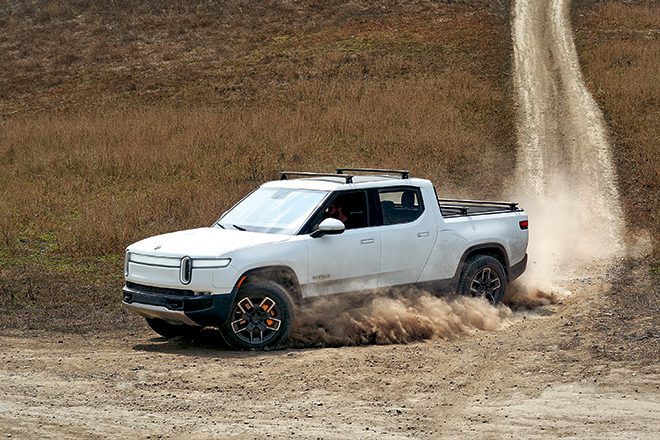

Startup carmaker Rivian gets a lot of credit in the industry for staying in stealth mode over the nine years it took to develop and refine its product plans. The company was the undisputed smash hit of the 2018 Los Angeles Auto Show, where it unveiled two battery-electric vehicles: the R1S full-size SUV and the R1T full-size pickup truck.
Rivian claims “tens of thousands” of depositors have put down $1,000 each to reserve electric trucks. The company has raised roughly $3 billion in capital, including investments from Amazon and Ford. It will use its large electric “skateboard” platform to build dedicated vehicles for each of those backers: 100,000 electric delivery vans over 10 years for Amazon, and a future luxury electric Lincoln model for Ford.


The R1T crew-cab pickup’s exterior dimensions are similar to those of mid-size pickups, but in width and wheelbase, it’s closer to a full-size model. The cab holds up to five passengers, though the bed length of 55 inches is short even for a mid-size truck. The R1T’s payload is 1,750 pounds, and Rivian says it will tow up to 7,700 pounds.
The R1T offers both a front trunk and a full-width tunnel located crosswise under the bed between the cabin and the rear wheels. Claimed battery capacities are 135 and 180 kWh, with projected ranges of 300 and 400 miles respectively. Rivian says four electric motors produce a total of 560 kw (750 hp) and 820 lb-ft of torque.


Rivian is predicting prices starting at $69,000, though we’ll be curious to see how the prices and specs align. It hopes to start production before the end of 2020. A year or so after the first two R1T models hit the market, Rivian plans to add a lower-spec version with a 105 kWh battery, a 230-mile range and 300 kW (402 hp) of power.
Bollinger B2
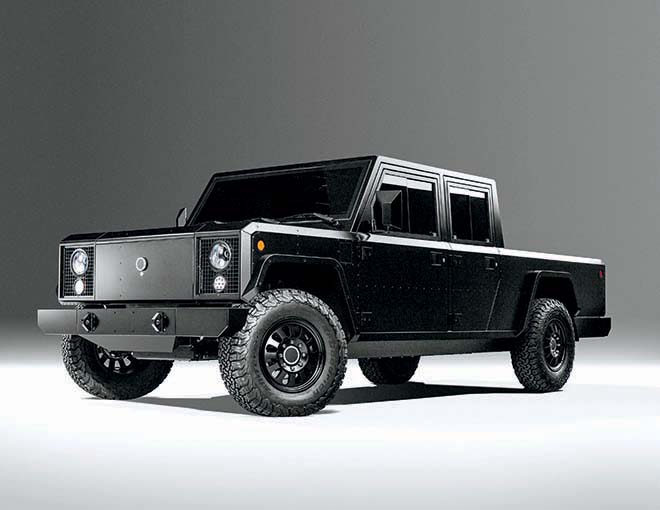

As a kid, Robert Bollinger wanted to be a car designer. His adult life took a detour, but left him with enough money (from selling his share of a hair-care products company) that he could realize that dream. With a farm in upstate New York, he wanted a tough farm truck that didn’t emit diesel fumes. He started doodling, and Bollinger Motors emerged.
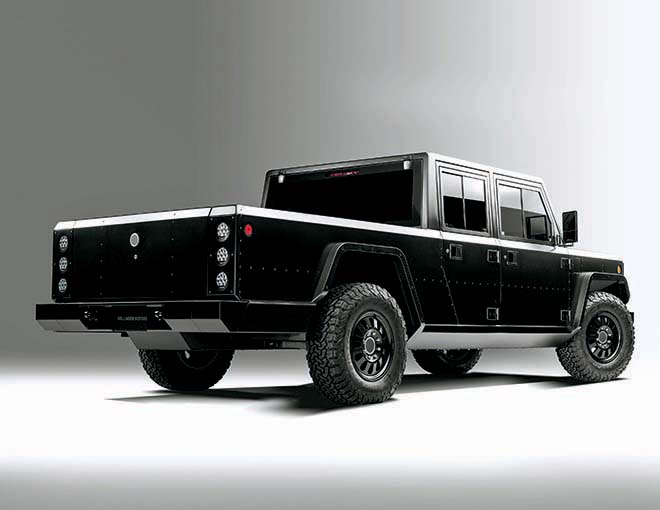

The company unveiled its first battery-electric truck in 2017, and the design instantly struck a chord among truck aficionados. Part Land Rover Defender, part original Ford Bronco, part International Scout, the square-edged, slab-sided electric truck offered clever features like opening front and rear hatches that let owners load 10- or 12-foot-long lumber down the center of the vehicle—with no engine, transmission, or drive shafts to get in the way.
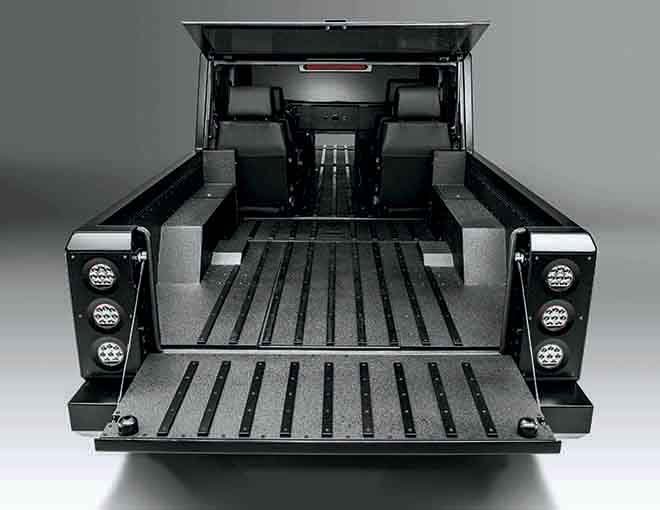

Startups are hard, though. Bollinger moved its engineering operations from upstate New York to Ferndale, Michigan, improving access to the thousands of knowledgeable engineers and parts suppliers around Detroit. It also refined its mission to focus on ultra-rugged, ultra-capable, anti-style trucks that command sky-high prices from wealthy buyers. Think Mercedes-Benz G-Class, perhaps—but all-electric.
How rugged are these vehicles? The B2 offers a standard 15 inches of ground clearance, which can be raised to 20 inches if needed. It has 10 inches of wheel travel, high- and low-range modes, front and rear locking differentials, and an old-school flat windshield—something even the Jeep Wrangler has dispensed with. Bollingers are rated as Class 3 trucks, so the NHTSA views them as commercial rather than passenger vehicles. That greatly simplifies regulatory approvals, which is crucial for a low-volume startup.
The B2 pickup truck will start at $125,000 and go higher with options. Like the less-pricey Rivian R1T, it has four doors, can seat four, and offers a bed for hauling goods from pricey antiques to manure. Its appeal comes from being blunter and more stripped-down. A 120 kWh battery pack powers two drive motors that produce 458 kW (614 hp) and 686 lb-ft of torque. Payload is 5,000 pounds, and tow rating is 7,500 pounds.
Range is expected to be around 200 miles, and Bollinger says production trucks will start rolling off the lines late this year, with first deliveries early in 2021. Sales outside North America are planned, including right-hand-drive markets—which suggests Britain’s new Land Rover Defender might soon see an all-American, all-electric rival.
Lordstown Endurance
Like many automotive startups, Lordstown Motors has a complicated lineage. The company takes its name from the 53-year-old ex-GM plant in Lordstown, Ohio, where it intends to build its Endurance electric pickup truck for commercial fleet customers. The 6.2-million-square-foot plant was shuttered in early 2019; Lordstown announced its purchase in November 2019 in a bargain deal.
So far, the company hasn’t shown a completed design for its truck—only drawings. The CEO of Lordstown, Steve Burns, also founded an earlier EV startup called Workhorse, which manufactures electric delivery vans.
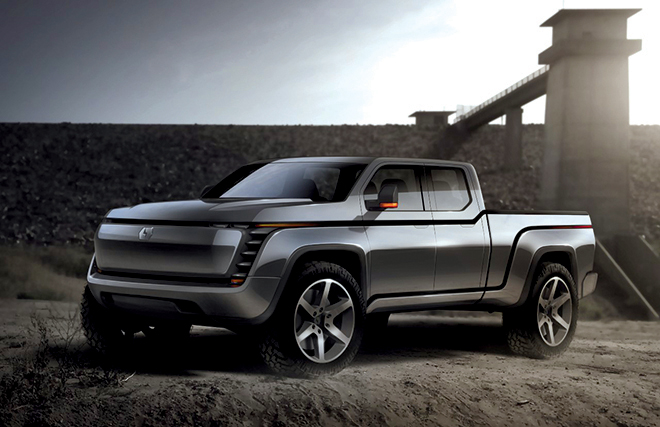

In May 2017, Workhorse announced plans to launch a range-extended plug-in hybrid pickup called the W-15, and gathered 6,000 pre orders from electric utilities and other fleet operators. Those plans are now shelved—Workhorse will focus on building commercial vans, while Lordstown will focus on electric pickup trucks. Members of Lordstown’s executive team have worked for GM, Hyundai, Karma, Nissan, Tesla, Toyota and Volkswagen. The company presently has 50 employees and more than 100 contract engineers.
The company has said the Endurance will provide all-wheel drive using an electric motor in each wheel hub. A power takeoff will allow electric equipment to run directly on battery current.
Lordstown says prices will start at $52,500, and it expects to launch the truck this summer. Production is planned for December 2020, with volumes of 20,000 trucks in 2021 and up to 200,000 four years later.
SEE ALSO: Q&A with Lordstown Motors CEO Steve Burns
Nikola Badger
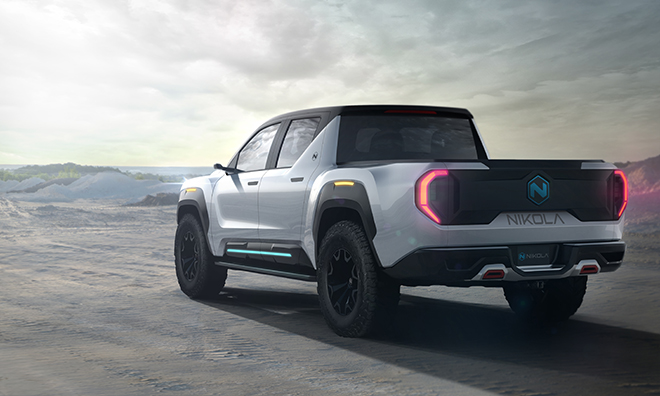

Nikola’s proposed electric pickup truck is the odd man out in this list. The company was formed several years ago to bring hydrogen fuel cell power to long-haul heavy commercial trucks. It got decent attention for that goal, but more recently it has added “battery-electric vehicles” to its mission.
In February, Nikola released images of the Badger concept truck. Like most of the other electrically-driven trucks in this list, it has four doors, four or five seats, no tailpipe emissions, and electric motors powering the wheels.
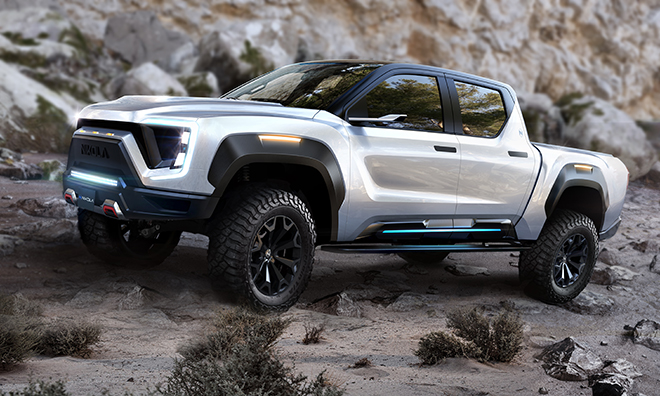

Unlike the others, though, Nikola describes two versions of the Badger. The battery-electric version will have a range of 300 miles; that rises to 600 miles in the model with a hydrogen fuel cell as a range extender. Claimed acceleration from 0 to 60 mph is just 2.9 seconds; few other specifications are available.
Nikola says reservations for the Badger will open late this year, after the truck debuts in September 2020. Neither prices nor production sites have been disclosed.
This article appeared in Charged Issue 48 – March/April 2020 – Subscribe now.




